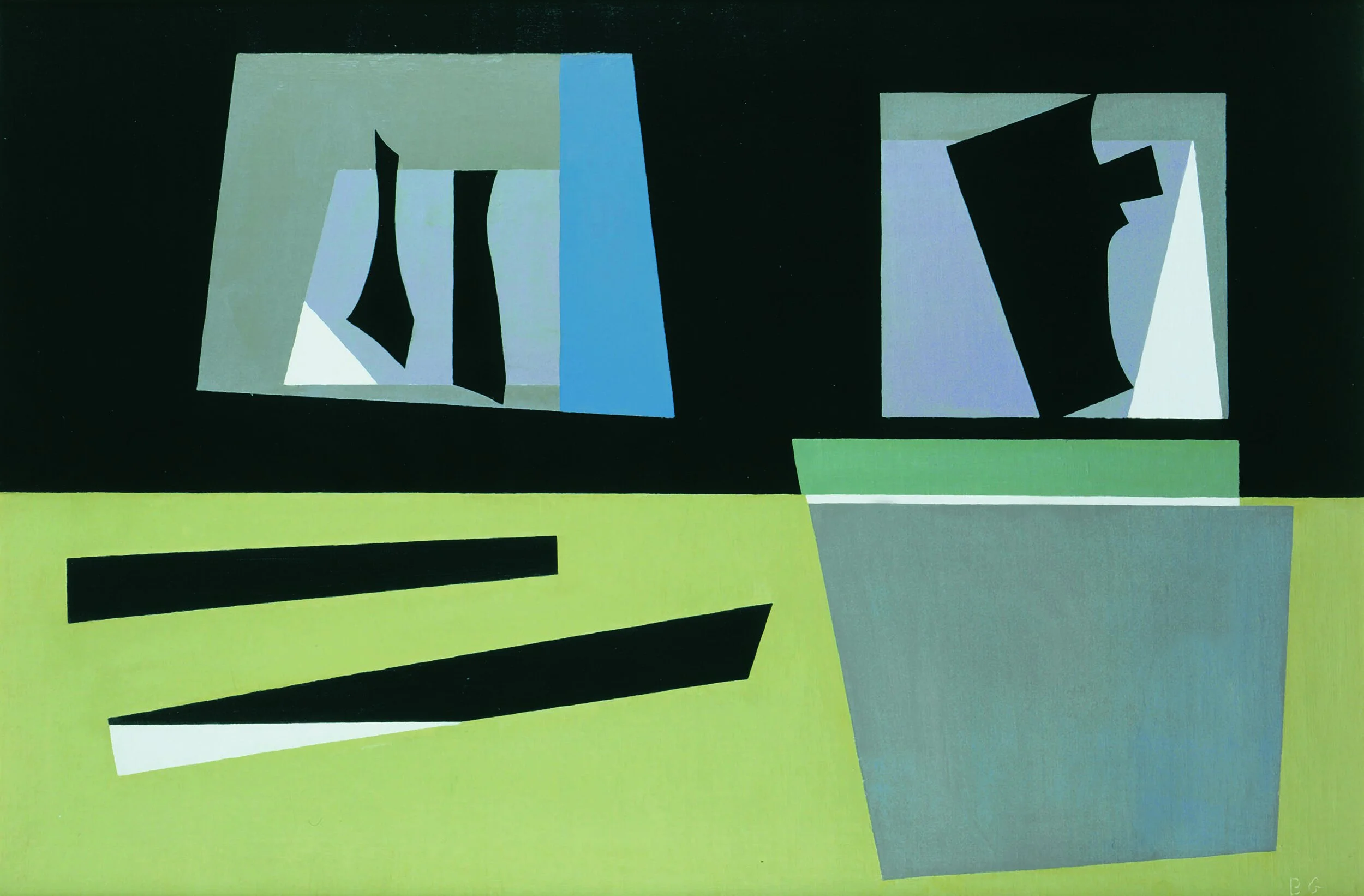BALCOMB GREENE (1904-1990)
Available Work | Biography
Biography • Balcomb Greene (1904-1990)
Balcomb Greene's art education did not officially begin until he was in his late twenties. As an undergraduate student Balcomb Greene majored in philosophy at Syracuse University. He discovered art during his senior year of college on a visit to the Metropolitan Museum of Art where he met his future wife, Gertrude Glass. In 1926 they were married and towards the end of 1926 Balcomb and Gertrude Greene went to Europe so that Balcomb could study psychology at the University of Vienna. The pair then moved back to New York City, where Balcomb Greene continued his studies at Columbia before accepting a teaching position in English Literature at Dartmouth College. In 1931 the Greenes moved to Paris. Inspired by the avant-garde art circles with which Gertrude associated, Balcomb Greene enrolled at the Académie de la Grande Chaumière and acquired additional art training through independent study.
Balcomb and Gertrude Greene returned to New York in 1933 fully committed to abstract art. Balcomb Greene began writing articles promoting abstraction in Art Front, the publication of the Artists' Union. During 1935 and 1936 he served as editor for Art Front while also writing for the newspapers Broadway Brevities and Graft. The establishment of the Works Progress Administration in 1935 allowed Greene to earn income from his art. In 1937 he worked on the abstract murals for the Williamsburg Housing Project in Brooklyn and designed a stained glass window for the Bronx School of Arts and Sciences. In 1939 he painted a mural for the Hall of Medicine at the New York World's Fair. Balcomb Greene was an active participant in the American Abstract Artists and was elected its first president. He also helped to write the group's charter and published many essays advancing their cause.
In 1940 Balcomb Greene enrolled at New York University to pursue his Master's degree in Art History. In 1942 he accepted a teaching position in the Art History Department of the Carnegie Institute of Technology in Pittsburgh. Balcomb Greene maintained his post at the Carnegie Institute of Technology until 1959. In 1947 Balcomb Greene exhibited at J.B. Neumann's New Art Circle. In 1950 he began to exhibit at Bertha Schaefer Gallery in New York. These exhibitions revealed the development of his style from the early 1930's to the late 1940's. Balcomb Greene explored the balance and clarity of simple geometric design, utilizing tilted planes to suggest a sense of depth without destroying the essential flatness of the composition. Greene was one of the first artists to remove the artist's presence conveyed through brush work by spraying pigment through stencils onto his canvases with an air gun. This notion of removing the artist from the art was ahead of its time and more in line with today's post-modern art methodology. During the 1930's and 1940's Greene created many small-scale collages that served as preparatory "sketches" for his larger, finished oil paintings. In 1951 Greene began to incorporate the human figure into his paintings, abstracting these forms in a manner inspired by the Surrealists. By the late 1950's, he had completely embraced this later style, and by the time of his death in 1990, Balcomb Green's art had become fully realistic.

